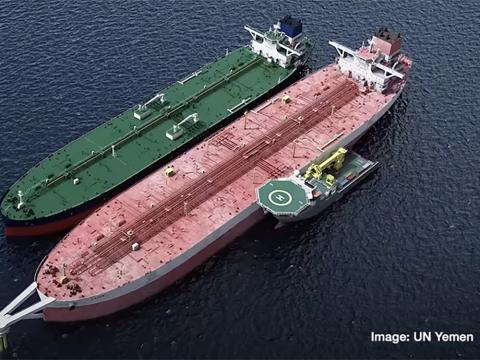Harbour Master
Harbour Masters
Worldwide there are approximately 3,000 merchant ports and the work of the Harbour Master can vary widely from country to country and from port to port even within the same country.


IMO is urging Member States to contribute equipment to help UN-led efforts to prevent a possible catastrophic oil spill from FSO SAFER, an ageing and rapidly decaying floating storage offshore (FSO) unit moored 4.8 nautical miles off the Red Sea coast of Yemen. IMO is providing expertise in oil spill preparedness and response as part of the contingency planning for a possible oil spill from the FSO SAFER, in line with its mandate set out in the International Convention on Oil Pollution Preparedness, Response and Co-operation (OPRC) (See 1 below).
A converted super tanker, FSO SAFER, contains an estimated 150,000 metric tonnes (approximately 1.1 million barrels) of crude oil, four times the amount spilled during the Exxon Valdez incident in 1989. It has been moored at Ras Isa since 1988 where it had been receiving, storing and exporting crude oil flowing from the Marib oil fields. But in 2015, due to the war in Yemen, production, offloading and maintenance operations on FSO SAFER were suspended.
FSO SAFER has not been inspected since then, but all assessments of its structural integrity suggest it has now deteriorated to the extent that it is beyond repair, and at imminent risk of breaking up or exploding. The danger is of a significant oil spill that would surpass Yemen’s capacity and resources to effectively respond.
On 9 March, the UN Development Programme (UNDP) signed an agreement to purchase a very large crude carrier (VLCC), Nautica, to take on the oil from FSO SAFER by emergency ship-to-ship transfer. Such operations are complex and inherently risky.
Nautica left Zhousha in China on 6 April and is expected to arrive in the Red Sea in early May.
Contingency planning for the transfer operation is, therefore, intensifying. One critical gap identified in Yemen’s preparedness to respond to an oil spill is the lack of specialized equipment within the country.
Because of lengthy lead times for the manufacture and acquisition of oil spill response equipment, IMO is seeking contributions of used or near end-of-life spill response equipment that can be transported to the region within weeks.
An indicative list of the required equipment annexed to Circular Letter No.4714 (See 2 below) includes items for the containment and recovery and the resource protection aspects of the operation, such as booms to contain any spill and oil skimmer brushes, as well as oil dispersants and rapid erection, self-standing storage tanks.
Information on who to contact with expressions of interest, or for additional information, can be found here. (See 3 below).
An oil spill from FSO SAFER would be a major humanitarian and environmental disaster likely to heavily impact the north-western coastline of Yemen, including the Yemeni Islands in the Red Sea, and Kamaran Island in particular – an area that encompasses vulnerable ecosystems. There is also potential for oil to drift and impact neighbouring countries, including Djibouti, Eritrea and Saudi Arabia.
Many Yemeni coastal communities that could be affected already rely on humanitarian aid to meet their basic needs, and a significant oil spill would seriously impact on the health and livelihoods of the people relying on resources from the sea. It could also severely disrupt operations at Yemen’s Hudaydah port, the point of entry for essential imported food, fuel and life-saving supplies. UNDP estimates the cost of clean-up alone would be $20 billion.
Further information on the FSO SAFER is available here: https://www.imo.org/en/MediaCentre/HotTopics/Pages/FSO-SAFER-oil-spill-risk.aspx
Illustration per UN Yemen ©.
The International Harbour Masters Association (IHMA) and the Port of Rotterdam Authority are pleased to announce the 15th International Harbour Masters Association Congress, to be held from 09–12 June 2026 at Theater Zuidplein in Rotterdam.
Naresh Sewnath, Senior Harbour Master at Transnet National Ports Authority (TNPA) in South Africa’s Port of Durban, began his maritime career back in 1988. He started out as a cadet with TNPA (then known as South African Transport Services (SATS).